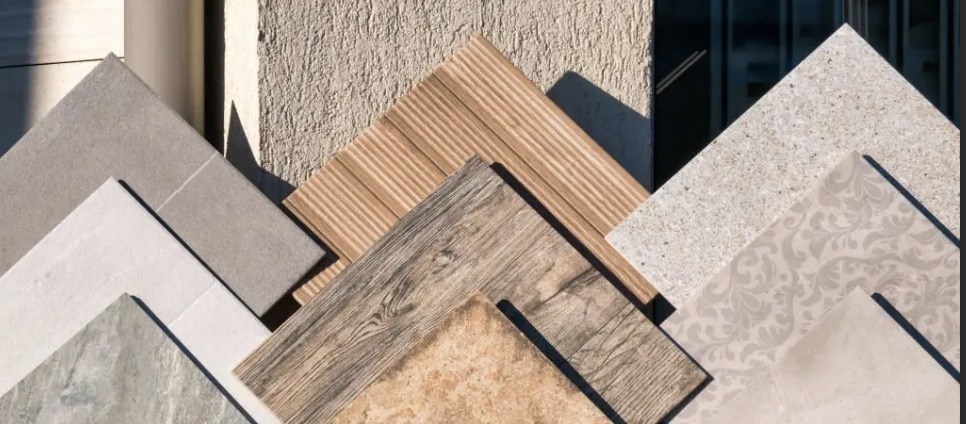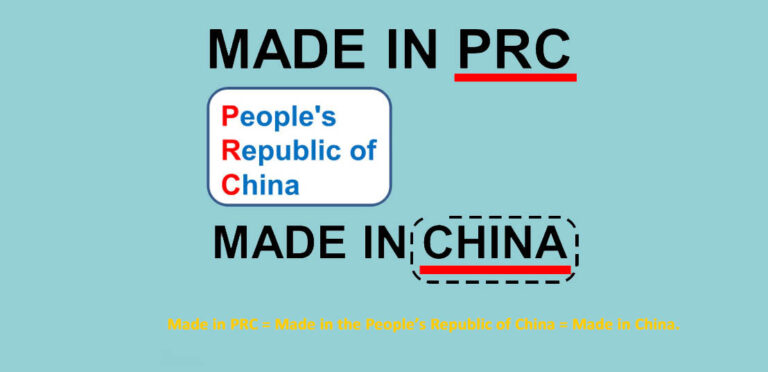Buying Porcelain Tiles in China: Glazed vs. Full Body Porcelain Tiles
What Are Porcelain Tiles?
Porcelain tiles are a type of ceramic tile that are made from refined clay and fired at extremely high temperatures. This process results in a dense, durable, and water-resistant material that’s perfect for both indoor and outdoor applications.
Unlike regular ceramic tiles, porcelain tiles offer a much higher resistance to moisture and wear, making them a popular choice for flooring, walls, and even countertops in homes and businesses around the world.

The beauty of porcelain lies in its versatility. From marble-look finishes to concrete-inspired textures, you can find porcelain tiles in virtually every color, design, and size imaginable.
Whether you’re remodeling a chic urban condo or designing a rustic kitchen, porcelain tiles give you that high-end finish without breaking the bank.
Table of Contents
The Rise of Chinese Tile Manufacturers
Over the past two decades, China has become a global leader in tile manufacturing. The combination of low labor costs, advanced technology, and a robust export infrastructure has allowed Chinese manufacturers to produce high-quality tiles at incredibly competitive prices.
Major cities like Foshan have become global hubs for tile production, attracting thousands of international buyers every year.
China’s tile industry isn’t just about quantity—it’s about innovation and quality too. With modern manufacturing techniques, digital printing technologies, and large-scale production facilities, Chinese tiles now rival—and often surpass—those made in Europe and the U.S.
Why Source Porcelain Tiles from China?

Sourcing tiles from China offers several advantages:
- Cost-Effective Pricing: Bulk production means lower prices per square meter.
- Design Variety: Chinese manufacturers offer endless design options with quick customization.
- Global Shipping Capabilities: Export logistics are well-established, making it easy to ship worldwide.
- OEM/ODM Services: Customize your own tile designs or branding.
However, to make the most out of buying porcelain tiles from China, you need to understand the two major types—Glazed Porcelain and Full Body Porcelain—and how each one can impact your project.
Glazed Porcelain Tiles
What Are Glazed Porcelain Tiles?
Glazed porcelain tiles are created by applying a layer of liquid glass (or glaze) over the surface of the tile during the manufacturing process.
This glaze is then fired in a kiln, where it fuses to the tile and creates a smooth, often glossy finish. The glaze allows manufacturers to incorporate vibrant colors, intricate patterns, and realistic textures into the tile’s surface.
The glaze acts like a protective coat. It enhances the tile’s appearance, adds resistance to stains, and allows for more artistic freedom in design. Whether you want a wood-look plank, marble-like slab, or Moroccan pattern, glazed porcelain delivers stunning visuals with consistency.
Key Benefits of Glazed Porcelain
One of the biggest advantages of glazed porcelain is its visual appeal. You can achieve just about any look, from classic stone aesthetics to ultra-modern abstract designs. But that’s not all:
- Stain Resistance: The glazed layer resists liquids and stains better than unglazed tiles.
- Color Variety: Glaze allows for deep, rich colors that don’t fade easily.
- Easy to Clean: A quick mop or wipe-down usually does the trick.
- Affordable: Generally cheaper than full body porcelain due to simpler production.
That said, the glaze is only on the surface. If the tile chips, the exposed area might show the base color underneath, which could contrast with the surface design.
Popular Uses and Applications
Glazed porcelain tiles are ideal for:
- Residential Floors and Walls: Perfect for kitchens, bathrooms, and living rooms.
- Accent Walls and Backsplashes: Their aesthetic quality makes them a standout feature.
- Retail Stores and Showrooms: Where appearance is important but foot traffic is moderate.
Design Flexibility
One area where glazed porcelain truly shines is in its ability to mimic natural materials. Advanced digital printing means tiles can look exactly like wood, marble, slate, or even textiles, offering interior designers and architects a palette limited only by imagination.
Maintenance and Cleaning
Glazed porcelain tiles are a dream to maintain. Their non-porous surface resists spills, dirt, and mildew, which means less time scrubbing and more time enjoying. Just avoid harsh abrasives, which might dull the glaze over time.
Full Body Porcelain Tiles
What Are Full Body Porcelain Tiles?
Full body (or through body) porcelain tiles are made from a uniform mixture of clays and minerals. The color and texture run all the way through the tile—what you see on the surface is consistent throughout its entire thickness.
That means even if the tile gets chipped or scratched, it will look nearly the same, since the pattern continues below the surface.
These tiles are typically more robust and less decorative but excel in function and durability. They are engineered for heavy use, extreme weather, and environments where longevity is a top priority.
Strengths and Advantages
Full body porcelain tiles are all about performance. Here’s why they’re favored in commercial and high-traffic environments:
- High Wear Resistance: Perfect for busy areas like malls and airports.
- Chip Resistance: Chipping reveals the same color, making it less noticeable.
- Non-Slip Finishes: Often textured for better traction.
- Weather-Proof: Great for both indoor and outdoor use.
These tiles are generally more expensive due to the uniform material composition and higher quality control standards. But what you pay up front, you save over time thanks to their durability.
Common Applications
Full body porcelain is commonly used in:
- Commercial Buildings: Hotels, office lobbies, shopping centers.
- Outdoor Spaces: Patios, driveways, pool decks.
- Industrial Areas: Warehouses, factories, public transit stations.
Durability in High-Traffic Areas
These tiles are built like tanks. If your project demands tiles that can take a beating—think wheeled carts, high heels, or constant cleaning—full body porcelain is the go-to. They’re engineered to last for decades with minimal visible wear.
Longevity and Wear Resistance
With proper installation, full body tiles can outlast most flooring materials. They maintain their aesthetic even under intense use, making them a smart investment for high-value properties.
Head-to-Head Comparison: Glazed vs. Full Body

Durability Comparison
When it comes to durability, full body porcelain tiles have a slight edge. Since the color and texture extend throughout the tile, they hold up better to chips and scratches. If a glazed tile chips, the damage is more noticeable because the top layer is different from the body underneath. This makes full body tiles the better choice for high-traffic areas where accidents and wear are more likely to occur.
However, that doesn’t mean glazed tiles aren’t strong. They’re still made from porcelain, which is extremely tough. For residential settings and light commercial spaces, glazed tiles often provide more than enough durability. The difference becomes significant only when tiles are exposed to constant foot traffic, equipment movement, or outdoor elements.
In short:
- Full Body: Best for commercial, industrial, and high-traffic areas.
- Glazed: Ideal for decorative and residential applications.
Cost Differences
Budget is always a factor, and here’s where glazed tiles take the lead. The manufacturing process of glazed tiles is more streamlined and requires fewer resources. As a result, they are generally more affordable. If you’re working with a tight budget and need a visually appealing tile, glazed porcelain is a cost-effective choice.
Full body porcelain tiles, due to their uniformity and performance features, tend to be more expensive. The upfront cost may be higher, but the long-term value often justifies it—especially in commercial settings where replacing tiles frequently isn’t ideal.
To break it down:
- Glazed Porcelain: More budget-friendly upfront.
- Full Body Porcelain: Higher initial cost, but better value over time.
Visual Appeal and Design Options
Glazed tiles win hands-down when it comes to design variety. The glaze layer allows for stunning visuals thanks to digital printing technology. You can replicate natural stone, hardwood, concrete, or even abstract patterns in vivid detail. The possibilities are practically endless.
On the other hand, full body tiles tend to have a more muted or natural look. Their designs are limited because the color must be consistent throughout the tile. You won’t find as many intricate patterns or high-gloss finishes, but you will get a sleek, uniform appearance that works well in minimalist or industrial spaces.
Summary:
- Glazed: Perfect for creative, vibrant, or detailed design aesthetics.
- Full Body: Great for simple, timeless, and consistent styles.
Maintenance Requirements
Both types of tiles are low maintenance, but glazed tiles have a slight edge in ease of cleaning. The glazed surface is less porous, meaning it resists stains, grime, and moisture more effectively. This makes them ideal for kitchens, bathrooms, and areas where spills are common.
Full body tiles are also resistant to water and stains but often come with textured finishes that may require more effort to clean. In outdoor or industrial environments, this texture provides grip but can accumulate dirt over time.
Maintenance Breakdown:
- Glazed: Wipe clean, stain-resistant, low effort.
- Full Body: Durable but may need occasional deep cleaning depending on finish.
Which One Should You Choose?

Residential vs. Commercial Use
Your choice between glazed and full body porcelain tiles largely depends on where and how you plan to use them.
- For Homes: Glazed porcelain is typically the better fit. It offers more design options, is cost-effective, and meets the durability needs of most homes.
- For Businesses: Full body porcelain is the go-to for commercial spaces where performance trumps design. Think lobbies, offices, malls, and restaurants.
If you’re building a stylish kitchen backsplash or bathroom floor, glazed porcelain brings elegance and charm. If you’re renovating a hotel lobby or outfitting a warehouse, full body tiles offer peace of mind with long-term durability.
Climate and Environment Considerations
Outdoor environments require tiles that can withstand weather changes. Full body porcelain, being denser and more consistent throughout, handles temperature fluctuations and moisture better. It doesn’t crack easily under stress and provides excellent slip resistance.
In contrast, glazed tiles are better suited for indoor use or mild climates. Some types of glaze can become slippery when wet or show wear over time if exposed to harsh outdoor conditions.
Recommendations:
- Outdoor, wet, or freezing areas: Go with full body porcelain.
- Indoor, decorative, or controlled environments: Glazed porcelain is sufficient.
Personal Taste and Design Preference
If aesthetics are your priority and you want to explore artistic or luxurious styles, glazed tiles will delight you. Their rich colors, intricate designs, and polished or matte finishes open up endless possibilities.
Full body tiles lean toward minimalism and function over form. They come in neutral tones and natural textures that fit well in modern or industrial designs but may lack the “wow” factor of glazed alternatives.
Final Thought:
- Choose Glazed if you love variety, color, and style.
- Choose Full Body if you prioritize strength, uniformity, and practicality.
Tips for Buying Porcelain Tiles in China
Choosing the Right Supplier
The Chinese tile market is massive, which is both a blessing and a challenge. You need to do your homework before placing any orders. Start by checking supplier credibility. Look for manufacturers with:
- Years of export experience
- Verified certifications
- Good reviews or references
- Transparent communication
Platforms like Alibaba, Made-in-China, and Global Sources can help you connect with suppliers. But always verify business licenses and sample quality before committing.
Avoid red flags like:
- Unresponsive communication
- Hesitation to provide samples
- Lack of factory visits or certifications
Understanding Tile Certifications
Quality standards are crucial when importing porcelain tiles. Reputable Chinese suppliers will have certifications that prove their tiles meet international requirements. Look out for:
- ISO 13006: Covers porcelain tile specifications.
- CE Certification: Indicates compliance with EU standards.
- SGS or TUV Reports: Third-party testing documents.
Ask the supplier to provide these documents and clarify what they mean for your target market (e.g., the U.S., UK, EU, etc.).
Navigating MOQ and Shipping Policies
Minimum Order Quantity (MOQ) is a common challenge when sourcing from overseas. Most factories have MOQs ranging from 500–1000 square meters, though some may offer smaller quantities for a higher price.
Shipping is another critical factor:
- FOB (Free on Board): Supplier pays for transportation to the port.
- CIF (Cost, Insurance, Freight): Price includes overseas shipping.
- DDP (Delivered Duty Paid): Full-service option, higher cost but lower stress.
Work with freight forwarders who specialize in tiles to handle customs, documentation, and transportation.
Quality Assurance When Importing porcelain tiles

Factory Visits and Inspections
Visiting the tile factory in person is one of the best ways to ensure product quality. If that’s not possible, hiring a third-party inspection company can be just as effective. A factory visit allows you to see the production process, check the quality of raw materials, and assess the overall professionalism of the supplier. Reputable factories will welcome your visit—they know it’s a sign of a serious buyer.
When visiting, here’s what to observe:
- Tile consistency across batches
- Proper drying and firing processes
- Packaging and loading methods
- Sanitary conditions and worker safety
It’s a good idea to take photos, videos, and samples during your visit for future reference.
Hiring Third-Party Quality Inspectors
If traveling to China isn’t feasible, don’t worry. Numerous agencies specialize in product inspection. Companies like SGS, Bureau Veritas, and AsiaInspection offer third-party quality checks at affordable rates. They’ll go to the supplier’s factory, inspect the products, and give you a detailed report—usually with pictures and recommendations.
Inspections typically include:
- Visual inspection (color, cracks, finish)
- Measurement checks (thickness, size)
- Water absorption tests
- Packaging integrity review
This small investment can save you from costly mistakes and defective shipments.
Sample Ordering and Testing
Always order samples before placing a large order. Samples allow you to:
- Assess color, texture, and finish
- Test the tile under your real-world conditions
- Match it with other design elements in your project
Make sure to ask for production samples, not showroom pieces, which may be higher quality than the actual product batch. Run basic tests like:
- Water absorption (soak the tile and weigh it)
- Scratch resistance (use a coin or key)
- Visual inspection under natural and artificial light
If the sample performs well, you can proceed confidently. If not, explore other suppliers.
Common Mistakes to Avoid when importing porcelain tiles
Overlooking Tile Specifications
Tile specifications aren’t just technical jargon—they affect performance, appearance, and longevity. Pay close attention to the following:
- PEI Rating: Measures surface hardness. PEI 3–4 is good for homes; PEI 5+ is needed for commercial use.
- Water Absorption Rate: Porcelain should be less than 0.5%.
- Slip Resistance (COF): Important for bathrooms and outdoor tiles.
- Rectified Edges: For tight grout lines and clean finishes.
Skipping these specs can lead to tiles that look great in theory but fail in practice. Always double-check product datasheets and compare them to your project needs.
Misjudging Project Needs
Many buyers get swept up in the look of a tile and forget about its practical application. Before making a decision, ask yourself:
- Will these tiles be used indoors or outdoors?
- Are they exposed to water, sunlight, or high foot traffic?
- Are textured surfaces needed for safety?
Choosing the wrong tile can lead to safety hazards, fast wear, or aesthetic mismatch. Always align your choice with the purpose of the space.
Ignoring Import Duties and Regulations
Buying tiles from China might save money on the surface, but import taxes and shipping fees can pile up quickly. You’ll need to factor in:
- Customs duties
- VAT or sales tax
- Port charges and brokerage fees
- Shipping insurance
It’s crucial to consult with a customs broker or international logistics expert before ordering. Ensure all paperwork—like commercial invoices, packing lists, and certificates—is in order to avoid delays or extra charges.
Future Trends in Porcelain Tile Manufacturing

Sustainable Tile Production
As environmental awareness grows, more manufacturers are adopting eco-friendly practices. In China, forward-thinking factories are:
- Using recycled materials in tile production
- Installing energy-efficient kilns
- Recycling water during manufacturing
- Adopting cleaner packaging materials
Look for certifications like LEED, Greenguard, or ISO 14001 to identify eco-conscious manufacturers. Sustainable tiles are not just good for the planet—they’re also gaining popularity in green building and LEED-certified projects.
Smart Tiles and New Technologies
Tile tech is getting a high-tech upgrade. Some of the latest innovations coming out of China include:
- Antibacterial Glazes: Perfect for hospitals and kitchens.
- Temperature-Regulating Tiles: Absorb or reflect heat for energy efficiency.
- 3D Printed Designs: Offer hyper-realistic textures like wood grains or stone veins.
Smart tiles are reshaping interior design possibilities. In the next few years, we can expect even more integration with IoT and intelligent environments.
Evolving Design Trends
Trends evolve fast in the tile world. Some current and upcoming design directions include:
- Large Format Tiles: Fewer grout lines and a sleek look.
- Matte Finishes: Less glare, more elegance.
- Terrazzo Styles: A vintage look with a modern twist.
- Geometric Patterns: Especially popular for accent walls and floors.
- Natural Looks: Tiles that mimic stone, wood, and concrete remain in high demand.
Chinese tile manufacturers are quick to adapt to trends, offering global buyers the latest styles at competitive prices.
Conclusion
Buying porcelain tiles in China offers a wealth of opportunities—but it requires smart decision-making. Whether you go with glazed porcelain for its endless design possibilities or full body porcelain for its unmatched strength, the key lies in knowing what suits your project best.
Both options have their merits:
- Glazed tiles shine in beauty, customization, and affordability.
- Full body tiles dominate in durability, uniformity, and performance.
Understanding the differences, assessing your needs, verifying suppliers, and managing logistics carefully can make your sourcing experience smooth and rewarding.
With the right approach, you’ll not only save money but also elevate your spaces with stunning, durable tiles that last for years.
FAQs About Porcelain Tiles
What is the main difference between glazed and full body porcelain tiles?
Glazed porcelain tiles have a decorative top layer, while full body porcelain has consistent color and texture throughout the tile. Glazed tiles offer more design variety, and full body tiles provide better durability.
Are full body porcelain tiles better for outdoors?
Yes, full body tiles are ideal for outdoor use due to their strength, low water absorption, and slip resistance. They perform better under harsh weather conditions and heavy foot traffic.
Is it cheaper to buy tiles from China directly?
Generally, yes. Chinese manufacturers offer lower production costs and competitive pricing. However, shipping, duties, and quality control must be factored in to calculate the true cost.
How do I ensure the quality of Chinese porcelain tiles?
Order samples first, review certifications, and consider factory visits or third-party inspections. Partnering with reliable suppliers is key to maintaining quality standards.
Can glazed tiles be used in high-traffic areas?
They can be, but with caution. In moderate-traffic zones like residential settings, glazed tiles perform well. For heavy commercial use, full body porcelain is the better choice.





